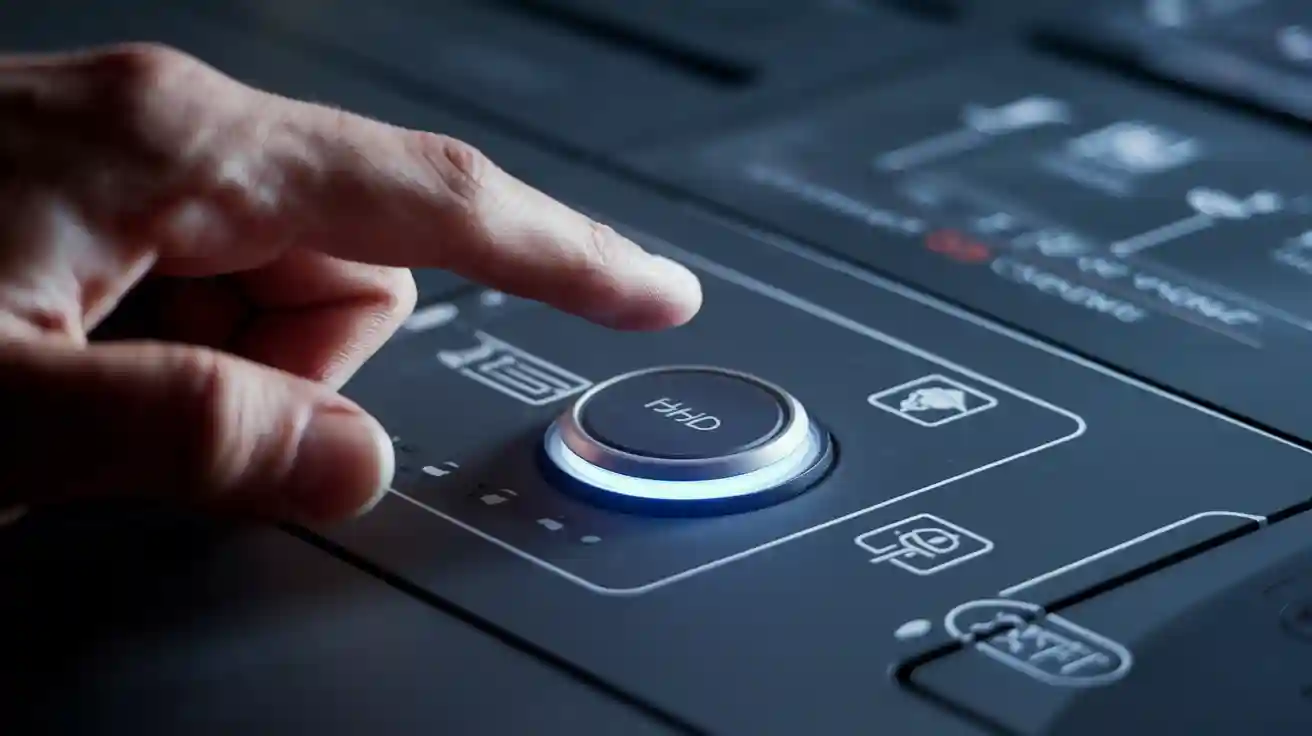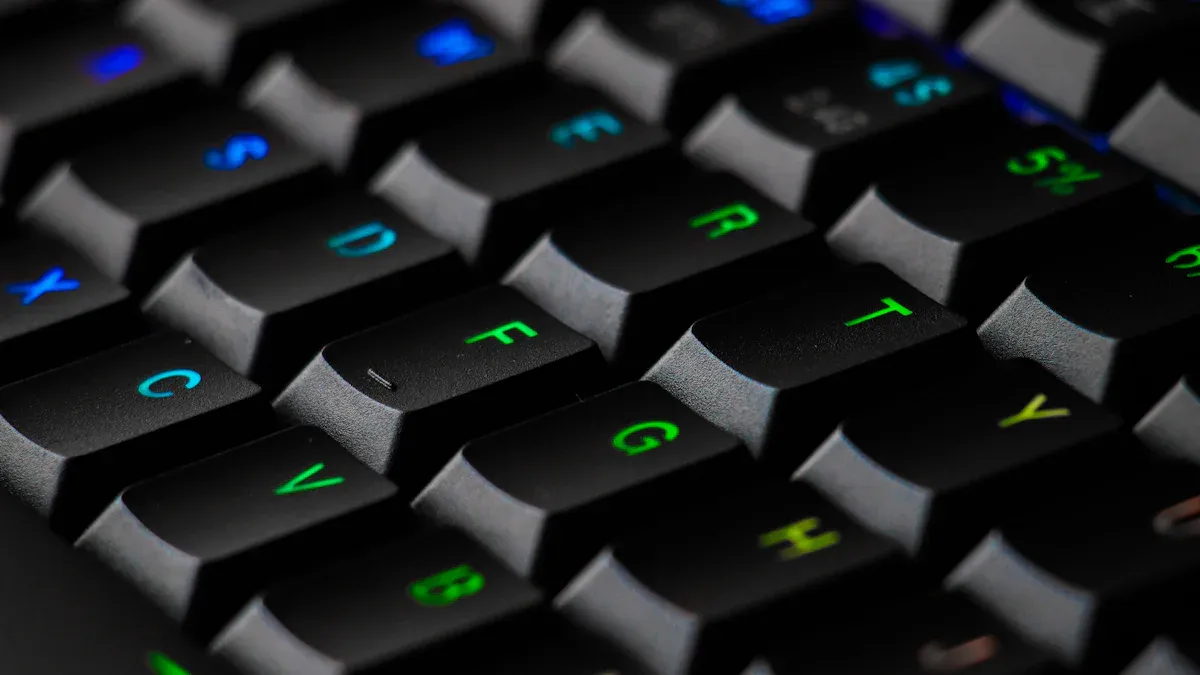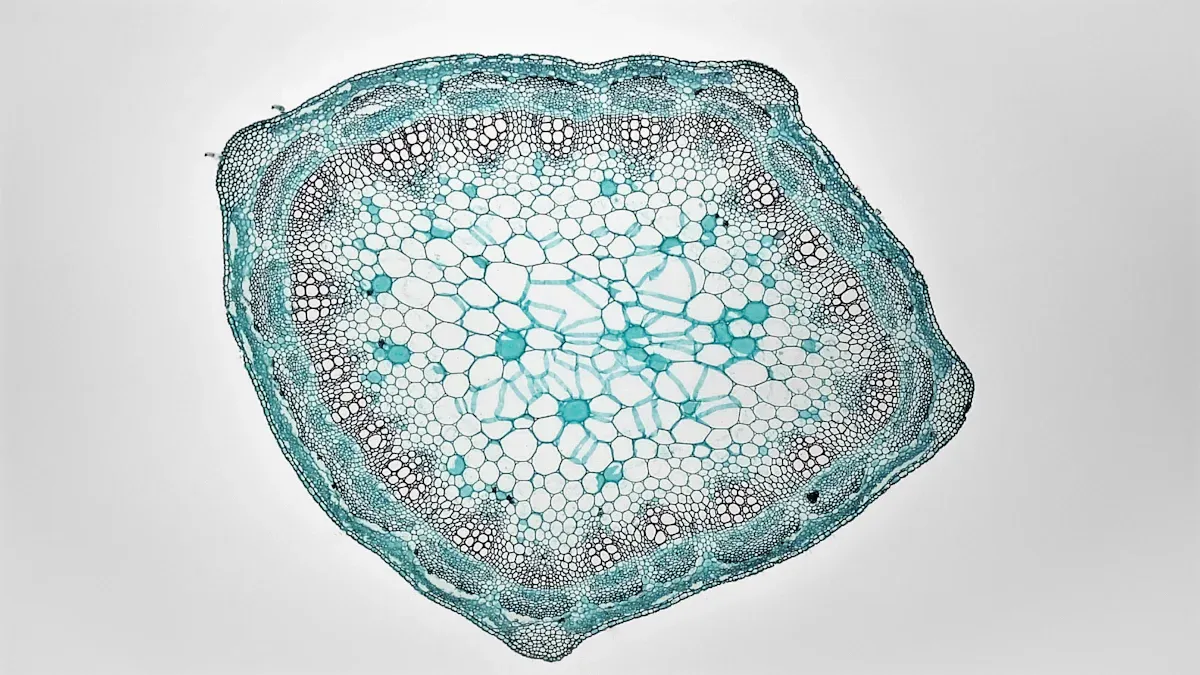
A Comprehensive Guide to Membrane Push Button Characteristics
A Comprehensive Guide to Membrane Push Button Characteristics

A membrane push button has a thin and bendy shape. It works by pressing down to turn circuits on. This design works well in many places. The membrane switch market is big around the world. It includes both membrane push button and membrane keypad products. In 2024, it was worth about USD 6.88 billion. More people want easy-to-use controls in different areas.
- Medical devices, industrial controls, consumer electronics, car systems, and home appliances use these switches. They choose them because they last long and are easy to clean.
- Both membrane push button and membrane keypad choices are small and can be made to fit needs. They help make modern devices easier and better to use.
Key Takeaways
- Membrane push buttons are thin and bendy switches. They work when you press layers together to finish a circuit. This makes them strong and saves space in many devices.
- These switches can be changed with printed pictures or words. They can give a feeling when pressed using metal domes. Some are sealed to keep out dust, water, and chemicals. This makes them good for hard places to work.
- Membrane keypads cost less than mechanical and capacitive switches. They last a long time and are easy to clean. They can be used in many ways. This is why they are used in medical, industrial, and home electronics.
Membrane Push Button Basics

Definition
A membrane push button is a switch with thin, bendy layers. These layers make a small and sensitive surface. When you press the button, the layers bend and touch. This lets electricity flow and the button works. The press gets noticed by the device. Mechanical switches have moving parts under each key. Optical switches use light to work. But a membrane push button works by pressure inside its layers. This design is good when there is not much space. It is also good when you need something that works well for a long time.
Key Features
Membrane push buttons and membrane keypads have many useful features. These features make them common in new devices. They are made of several layers. Each layer has its own job. The table below shows the usual layers in a membrane switch:
| Layer Name | Material(s) | Function / Role in Membrane Push Button Construction |
|---|---|---|
| Graphic Overlay | Polyester (PET) or Polycarbonate (PC) | The top layer shows icons or words. It keeps the inside safe. You can change how it looks. |
| Overlay Adhesive | Acrylic or polyester-based PSA | This glue sticks the top layer to the next one. It keeps things lined up. It stops dust and water. |
| Dome Retainer Layer | Metal or polyester domes (only tactile switches) | This layer holds domes for a click feel. Some switches do not need this layer. |
| Spacer Layer | Various flexible materials | This layer keeps the top and bottom apart. It stops mistakes. It has holes for pressing keys. |
| Top Circuit Layer | PET with silver, carbon, or copper conductive ink | This layer has part of the circuit. It can have lights or resistors. |
| Spacer or Circuit Adhesive | Thin pressure-sensitive adhesive | This glue holds the circuits together. It keeps them apart except when pressed. |
| Bottom Circuit Layer | PET or flexible copper | This layer finishes the circuit when pressed. It can have shields or ground parts. |
| Rear Adhesive | High-strength PSA | This glue sticks the switch to a case. It keeps it in place for a long time. It can help seal the switch. |
Customisation is a big plus. Makers can print pictures or words on the top layer. They use silk screen or inkjet printing. This keeps brand colours bright and lasting. Some keys are raised for a better feel. This helps people find the right button. Special finishes make the surface less shiny and easier to hold. This is helpful in hospitals or factories. Lights like LEDs or glowing panels can be added. These make symbols or logos easy to see. All these features help make custom membrane switches fit many needs.
Membrane keypads often give a click feel with metal or polyester domes. This helps people know they pressed a button. The sealed design keeps out dust and water. This makes the switch last longer and work better.
Applications
Membrane push buttons and keypads are used in many places. They are strong and can be used in lots of ways. Remote controls, microwaves, and medical tools use these switches. They are thin and easy to clean. Factories use membrane keypads because they last in tough places. Car dashboards and home gadgets use them too. The pictures and lights can be changed to help people see and use them.
Note: Membrane switches work well where water, dust, or chemicals might break normal switches.
Custom membrane switches can be made for special jobs. They can be used in lab machines or gym equipment. You can pick the shape, add lights, and choose the surface. This means each keypad can be made for its job. This makes membrane push buttons and keypads a top pick for new devices.
Construction and Comparison

Layer Structure
A membrane keypad has many thin layers. Each layer does something special. The top layer is made from polyester or polycarbonate. It shows symbols or instructions. Under this is a sticky layer that holds the top in place. The dome retainer layer keeps metal domes where they should be. These domes give a click when pressed. When you push down, the dome bends and touches the circuit. This closes the circuit and sends a signal. The spacer layer keeps the top and bottom circuits apart. This stops mistakes from happening. The bottom circuit layer is usually made with conductive ink on polyester. It finishes the path for electricity when pressed.
- Metal domes are important in membrane keypad design:
- They bend when you press them and make a sharp snap.
- This snap lets you know the button was pressed.
- The domes pop back up after you let go.
- The shape, material, and how they are fixed changes the feel.
- You can change how hard it is to press and how it clicks.
New designs have made membrane keypads last longer. Makers now use silicone with tiny strong surfaces. This helps the keys last through more than 500,000 presses. Better moulding and heating methods make the layers even and strong.
Advantages
Membrane keypads have many good points over other switches. The table below shows the main benefits:
| Advantage Category | Description |
|---|---|
| Cost | Membrane keypads are cheap to make, even for small batches. |
| Design Flexibility | You can choose shapes, colours, and how the buttons feel. |
| Environmental Resistance | They can handle heat, chemicals, water, dust, oil, and sunlight. They work well in tough places. |
| Durability | Metal domes and new silicone help them last a long time. |
| Hygiene | The sealed top is easy to clean, so they are good for hospitals and kitchens. |
You can add special pictures and lights to membrane keypads. This helps people use them in the dark. The sealed design keeps out dust and water. This makes the keypad last longer.
Limitations
Membrane keypads are not perfect. They do not always give as much feedback as mechanical switches. Some have metal domes to help, but not all do. If a membrane keypad breaks, it is hard to fix. The layers are stuck together. If one part stops working, you might need a new keypad.
- Other problems are:
- The keys do not move much, which some people do not like.
- Flat keypads without domes feel less clicky.
- Making special designs can cost more for small orders.
- Using the keypad a lot can wear out the printed parts.
Membrane Keypad vs. Other Switches
Membrane keypads are different from mechanical and capacitive switches. A membrane keypad uses soft layers that touch to close a circuit. Mechanical switches have moving parts under each key. They give a strong click and feel. Capacitive switches sense your finger’s touch. They do not need you to press down.
Membrane keypads are flat and work by pressing. They are small and easy to keep safe from dust and water. Mechanical switches feel better to press but cost more and are harder to protect. Capacitive switches can stop working if they get wet or if you wear gloves.
Tactile feedback is a big difference. Mechanical switches give a strong feel. Membrane keypads with domes give a sharp snap. Flat ones do not feel as good. Capacitive switches use lights or sounds instead of a physical click.
- The cost to make each type is different:
- Membrane keypads are cheapest for small and medium amounts.
- Mechanical switches cost more because they are harder to build.
- Rubber keypads are in the middle and are good for big orders.
Membrane keypads are great for factories, hospitals, and home gadgets. Their strong, sealed build is good for tough places. Mechanical and capacitive switches may feel better, but membrane keypads are cheaper, last long, and can be changed to fit many needs.
A membrane keypad is thin and strong. Many industries use it because it lasts a long time. People like that it can be changed to fit their needs. It feels nice to press and is sealed to keep out dirt. When picking a membrane keypad, people should think about:
- What material makes it last longer
- What the device will be used for
- How the buttons feel when pressed
- How it can work with other parts
- If it is good for the environment
- If it can be made tougher
- What users want from it
- If it uses new technology
A membrane keypad works well in hospitals, factories, and home gadgets. It can handle tough places and is easy to clean. It lasts a long time and can be made in many shapes. It can have lights or sensors added. It matches new touch screen styles. It can use materials that are better for the planet. It can work with smart machines. It always works well and is safe for clean places. It does not cost too much and gives the same good results every time.

Know the Difference between Tactile and Non-Tactile Membrane Switching
When selecting the appropriate interface for a product, it can be wise to understand the differences between tactile and non-tactile membrane switches so that the engineer and the purchaser make a better decision. They are both very common in medical equipment, domestic appliances, and industrial equipment, though they do not present the same user experience. ...

Step-by-Step Guide to Selecting the Right Membrane Switch for Your Product
It is not easy to choose the appropriate interface for an electronic device with the number of various types of membrane switches. This is a basic, stepwise analysis to help product designers and manufacturers select the optimal choice. Step 1: Determine your Application Requirements Begin by making a list of locations where switches are used, ...

Top Membrane Switches for Home Electronics Projects in 2025
You can elevate your home electronic membrane switch project in 2025 with standout models such as the 4×4 Matrix 12 Keys Keypad from SOUSHINE, the rgb-enabled strip switches from Molex, and custom graphic switches by Panasonic. These switches offer slim profiles and reliable performance, making them easy to integrate into your DIY setup. You gain ...
Contact us online